The 2024 EACTS/EACTAIC/EBCP Guidelines on Cardiopulmonary Bypass in Adult Cardiac Surgery provide comprehensive, evidence-based recommendations for the management of CPB, reflecting the latest advancements in technology, patient safety, and clinical outcomes. Developed through a multidisciplinary collaboration of experts from the European Association for Cardio-Thoracic Surgery (EACTS), the European Association of Cardiothoracic Anaesthesiology and Intensive Care (EACTAIC), and the European Board for Clinical Perfusion (EBCP), these guidelines serve as an essential reference for surgeons, perfusionists, and anesthesiologists involved in adult cardiac surgery.
Key Updates and Innovations
Compared to the previous 2019 guidelines, the 2024 edition introduces several critical updates, including:
- Expanded Monitoring Strategies: New recommendations emphasize the importance of continuous neuromonitoring, including regional cerebral oxygen saturation (rScO2) and depth of anesthesia monitoring. These techniques enhance brain protection and help reduce neurological complications during CPB.
- Artificial Intelligence in Perfusion Practice: AI-based decision-making tools and automated data recording systems are increasingly being integrated into perfusion strategies to optimize outcomes and minimize human error.
- Advanced Organ Protection Protocols: Enhanced protocols for myocardial, brain, kidney, and lung protection during CPB are included, with a focus on temperature regulation, pharmacological interventions, and remote ischemic preconditioning (RIPC).
- Safety and Quality Improvement: The guidelines stress the importance of standardized safety protocols, including the use of advanced heart-lung machine hardware, carbon dioxide flushing of the surgical field, and rigorous data management to track patient outcomes.
- Minimally Invasive Extracorporeal Circulation (MiECC): New insights into the benefits of MiECC are discussed, offering improved biocompatibility and reduced inflammatory responses compared to conventional CPB techniques.
Cardiopulmonary Bypass: Best Practices and Equipment
The guidelines provide detailed recommendations on the optimal setup and management of CPB equipment, including:
- Heart-Lung Machines: Essential safety features, such as pressure monitoring devices, bubble detectors, and arterial line filters, are mandatory to reduce the risk of embolization and organ injury.
- Oxygenators: The use of microporous membrane oxygenators is recommended, while polymethylpentene membrane oxygenators should be avoided when volatile anesthetic agents are used.
- Pumps: Centrifugal pumps are preferred for longer CPB durations due to improved hemocompatibility, while roller pumps remain standard for specific applications requiring precise pressure control.
- Cannulation Techniques: The choice of arterial and venous cannulas should be tailored to patient-specific needs, with epiaortic ultrasonography recommended to assess aortic plaques and minimize stroke risk.
- Blood Filtration: The use of arterial line filters and leucodepletion filters is discussed, although current evidence does not support routine use of leucodepletion filters due to inconsistent clinical benefits.
Organ Protection During CPB
Organ protection strategies play a crucial role in optimizing patient outcomes:
- Myocardial Protection: The guidelines emphasize the importance of effective cardioplegia solutions and myocardial management strategies to prevent ischemic injury.
- Neurological Protection: Continuous cerebral oxygenation monitoring and optimized perfusion strategies help mitigate the risk of postoperative cognitive dysfunction.
- Renal Protection: Maintaining adequate perfusion pressure and employing pharmacological strategies like N-acetylcysteine can reduce acute kidney injury (AKI) incidence.
- Lung Protection: Techniques such as lung perfusion, ventilation strategies, and steroid administration are outlined to minimize pulmonary complications postoperatively.
Future Research and Gaps in Knowledge
Despite these advancements, the guidelines acknowledge several areas that require further investigation, including:
- The long-term benefits of AI-driven perfusion strategies.
- The role of alternative anticoagulation methods beyond heparin.
- Optimized protocols for blood transfusion and hemodilution management.
- The impact of emerging oxygenator technologies on patient outcomes.
By addressing these gaps through ongoing research and clinical trials, future iterations of the guidelines will continue to refine and improve CPB methodologies.
Conclusion
The 2024 EACTS/EACTAIC/EBCP Guidelines on Cardiopulmonary Bypass in Adult Cardiac Surgery represent a significant advancement in the field, integrating cutting-edge research and expert consensus to standardize best practices and enhance patient safety. These guidelines serve as a critical resource for healthcare professionals involved in cardiac surgery, providing clear, evidence-based recommendations for optimizing CPB procedures. As technology and research continue to evolve, future updates will further refine these recommendations, ensuring that CPB remains as safe and effective as possible.







